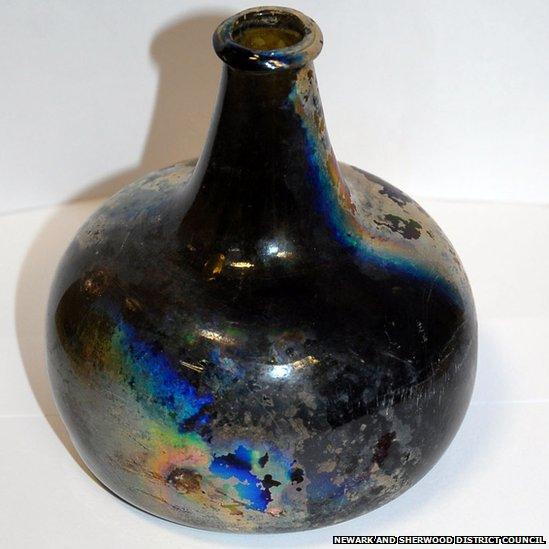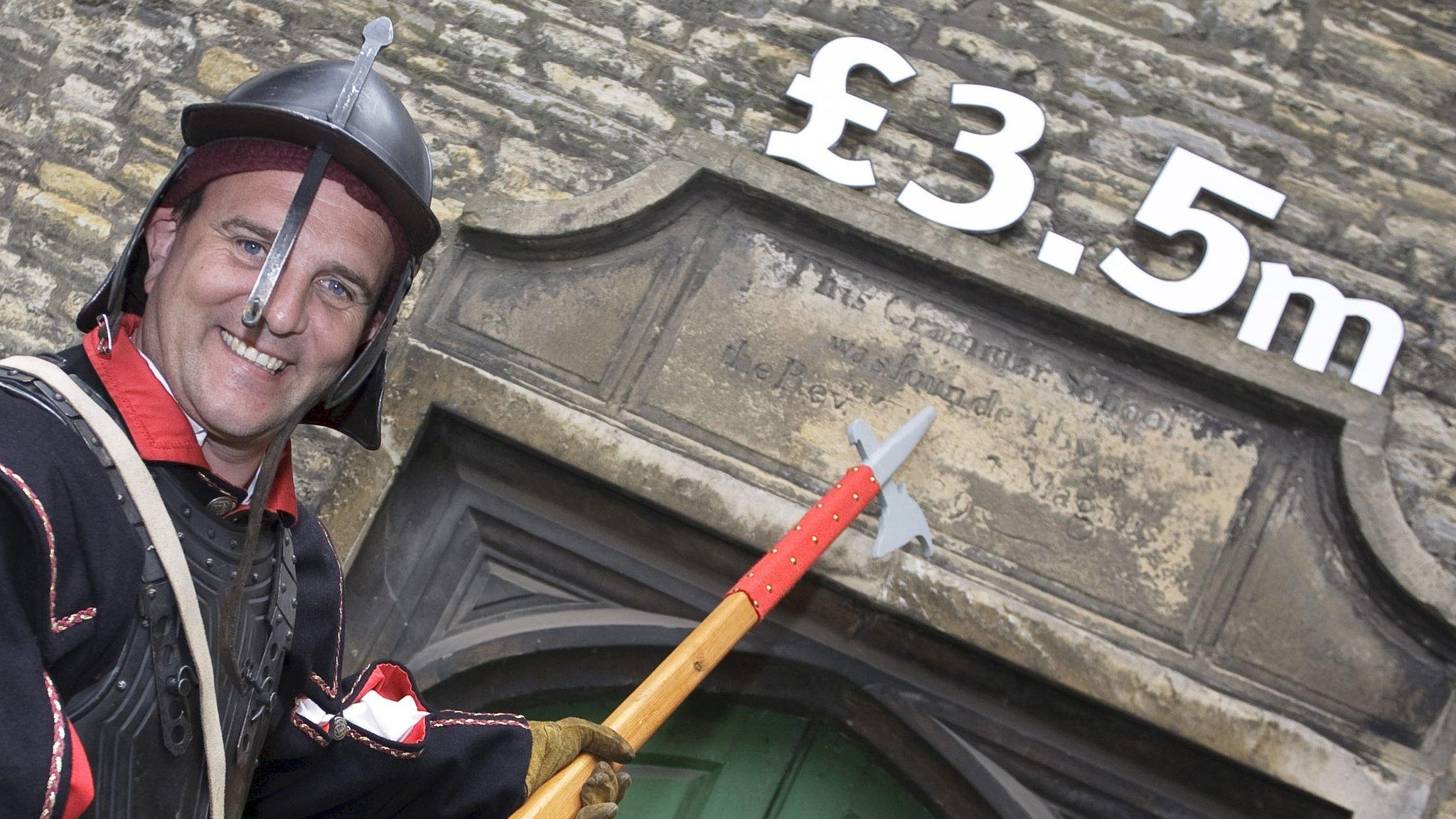Witch bottle found during Newark Civil War Centre dig
- Published

The bottle was probably made in the 1700s and used to ward off witches' evil spells
A suspected witch bottle has been unearthed by archaeologists during a dig at the site of the new Civil War Centre in Nottinghamshire.
The green bottle, which is about 15cm (5.9in) tall, was probably used in the 1700s to ward off evil spells cast by witches, researchers believe.
The witch bottles were usually filled with fingernails, hair and even urine.
The relic was found during a project to restore the Old Magnus Building for use as a museum and visitor centre.
'Malign forces'
Archaeologist Will Munford, from Pre-construct Archaeological Services of Lincoln, said: "Finding this very fragile bottle in one piece supports the idea that it was carefully placed in the ground.
"Perhaps it was buried during the construction of the Georgian part of the Old Magnus Building, but we can't be certain.
"It is the first time we have encountered a suspected witch bottle, but we did find a probable witching shoe - which had a similar purpose - in Worlaby, Lincolnshire.
"We often forget that people were very superstitious - it was part of their everyday lives.
"They thought that secreting such personal objects would offer protection from malign forces."

Witch bottle

A witch bottle was found in the foundations of a house in Navenby in Lincolnshire in 2005
Such bottles often contained pins, fingernails or urine and were used to ward off evil spirits
The bottles were usually made of stoneware or glass but sometimes old inkwells or candlesticks were used
The most famous witch trials in Britain took place at North Berwick, in Scotland, in 1591 and Pendle, Lancashire, in 1612

As many as 300 people were executed for witchcraft in eastern England between 1644 and 46. The laws against witchcraft were repealed almost a century later, in 1736.
Old Magnus Building project manager Bryony Robins, from Newark and Sherwood District Council, said the bottle would be displayed at the National Civil War Centre when it opened in 2015.
"It's a fascinating object and part of the history of Newark. If it is a witching bottle, it tells us a great deal about how people once viewed the world," she said.
- Published24 March 2013

- Published31 May 2012

- Published10 September 2010